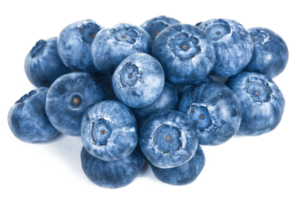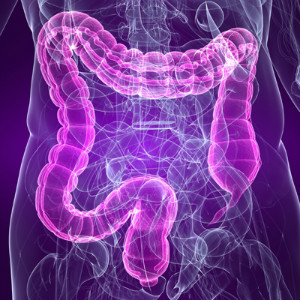 Last week a person told an amazing story in the comments section after a post on this site. After suffering from a "constant runny nose and a bad smell" in the nose for 2 years - which was diagnosed as "fungi and staph" in the sinuses - the person started doing "kimchi treatments" (as discussed in the Sinusitis Treatment Summary page). After 2 weeks a fungal ball was loosened, which came out of the sinuses and into the mouth, and was then spit out. About an inch in size - a smelly, grey/green, round fungal ball. Wow. Which leads to the question: Are any of the microbes in live kimchi anti-fungal?
Last week a person told an amazing story in the comments section after a post on this site. After suffering from a "constant runny nose and a bad smell" in the nose for 2 years - which was diagnosed as "fungi and staph" in the sinuses - the person started doing "kimchi treatments" (as discussed in the Sinusitis Treatment Summary page). After 2 weeks a fungal ball was loosened, which came out of the sinuses and into the mouth, and was then spit out. About an inch in size - a smelly, grey/green, round fungal ball. Wow. Which leads to the question: Are any of the microbes in live kimchi anti-fungal?
Kimchi is an amazing live fermented food, typically made with cabbage and other vegetables and a variety of seasonings. Kimchi is the national dish of Korea and so there is tremendous interest in Korea in studying kimchi to learn about the many different microbial species in kimchi, including how they change over the course of fermentation.
It turns out that kimchi contains many species of bacteria, including various species of Lactobacillus - which are considered beneficial. Of course one of the species found in kimchi over the course of fermentation is Lactobacillus sakei - the bacteria that successfully treats sinusitis, and which I have written about extensively. L. sakei predominates over pathogenic bacteria (antibacterial) - which is why it is also used as a sausage starter culture (to kill off bacteria such as Listeria). One study found that the garlic, ginger, and leek used in making kimchi were the sources of L. sakei bacteria found in fermented kimchi.
Studies show that a number of the Lactobacillus species found in kimchi are antifungal against a number of different kinds of fungi. Some of these antifungal bacteria are: Lactobacillus plantarum, L. cruvatus, L. lactis, L. casei, L. pentosus, L. acidophilus, and L. sakei (here, here).
A study from 2005 found that some Lactobacillus species found in kimchi are predominant over a fungi known to cause health problems in humans - Aspergillus fumigatus, a mold (fungi) which is the most common cause of Aspergillus infections. Aspergillus (of which there are many species) is very common both indoors and outdoors (on plants, soil, rotting plants, household dust, etc.), so people typically breathe in these fungal spores daily and without any negative effects. However, sometimes Aspergillus can cause allergic reactions, infections in the lungs and sinuses (including fungal balls), and other infections. (more information at CDC site).
The study found that 5 bacterial species in kimchi were also antifungal against other species of fungi (Aspergillus flavus, Fusarium moniliforme, Penicillium commune, and Rhizopus oryzae). The 5 bacterial species in kimchi that they found to be antifungal were: Lactobacillus cruvatus, L. lactis subsp. lactis, L. casei, L. pentosus, and L. sakei.
Just keep in mind that fungi are everywhere around us, and even part of the microbes that live in and on us - this is our mycobiome. We also breathe in a variety of fungi (mold spores) every day. In healthy individuals (even babies) all the microbes (bacteria, viruses, fungi, etc) live in balanced microbial communities, but the communities can become "out of whack" (dysbiosis) for various reasons, and microbes that formerly co-existed peacefully can multiply and become problematic.
If the populations get too unbalanced (e.g., antibiotics can kill off bacteria, and then an increase in fungi populations take their place) then ordinarily non-harmful fungi can become pathogenic. Or other pathogenic microbes can enter the community (e.g., through infection), and the person becomes ill.
IN SUMMARY: Kimchi has beneficial bacteria in it that are effective not just against bacteria (antibacterial), but also against some kinds of fungi (antifungal). One 2016 review study went so far as to say: "Kimchi possesses anti-inflammatory, antibacterial, antioxidant, anticancer, antiobesity, probiotic properties, cholesterol reduction, and antiaging properties."
Experiences of my family and people writing suggest that the L. sakei in kimchi (and other products) is also antibiofilm. Hopefully, there will be some research on this in the future. But in the meantime, please keep writing to me about fungal complications of sinusitis, and especially if kimchi, L. sakei products, or other probiotics helped.

 Once again the Mediterranean diet is linked to health benefits - this time a 40% lower incidence of certain types of breast cancer in postmenopausal women. Following a Mediterranean style diet has been linked in earlier studies to various health benefits, such as lower rates of heart disease, lower rates of early death, and certain cancers.
Once again the Mediterranean diet is linked to health benefits - this time a 40% lower incidence of certain types of breast cancer in postmenopausal women. Following a Mediterranean style diet has been linked in earlier studies to various health benefits, such as lower rates of heart disease, lower rates of early death, and certain cancers. A new study was published that supports eating lots of blueberries (or drinking blueberry juice) for health - this time better brain functioning in people aged 65 to 77 who drank concentrated blueberry juice daily for 12 weeks. The people randomly assigned to the group drinking blueberry juice daily showed improvements in cognitive function, blood flow to the brain, and activation of the brain while carrying out cognitive tests. The people received MRIs (magnetic resonance imaging), as well as various blood tests and cognitive tests.
A new study was published that supports eating lots of blueberries (or drinking blueberry juice) for health - this time better brain functioning in people aged 65 to 77 who drank concentrated blueberry juice daily for 12 weeks. The people randomly assigned to the group drinking blueberry juice daily showed improvements in cognitive function, blood flow to the brain, and activation of the brain while carrying out cognitive tests. The people received MRIs (magnetic resonance imaging), as well as various blood tests and cognitive tests. This past week a study was published linking 8 to 10 portions of fruits and vegetables per day with a lower risk of early death, cancer, heart disease, and stroke. This confirms other research linking many daily servings of fruits and vegetables with various health benefits. For example, the study findings discussed in the
This past week a study was published linking 8 to 10 portions of fruits and vegetables per day with a lower risk of early death, cancer, heart disease, and stroke. This confirms other research linking many daily servings of fruits and vegetables with various health benefits. For example, the study findings discussed in the  Do you want to live longer and be healthy at the same time? Some possible ways may be to restrict the calories in the diet (every day) or to practice intermittent calorie restriction (a fasting mimicking diet a few days a month or even each week, such as
Do you want to live longer and be healthy at the same time? Some possible ways may be to restrict the calories in the diet (every day) or to practice intermittent calorie restriction (a fasting mimicking diet a few days a month or even each week, such as  A recent study had great results in preventing glaucoma or stopping the progress of glaucoma by supplementing the diet of mice with vitamin B3 (nicotinamide). But now the research needs to see if this also holds true for humans.
A recent study had great results in preventing glaucoma or stopping the progress of glaucoma by supplementing the diet of mice with vitamin B3 (nicotinamide). But now the research needs to see if this also holds true for humans. A new study found differences in gut microbes between active women (they exercised at least the recommended amount) and those that are sedentary. When the gut bacteria were analyzed with modern tests (genetic sequencing) the active women had more of the health promoting beneficial bacteria such as Faecalibacterium prausnitzii, Roseburia hominis, and Akkermansia muciniphila than the sedentary women. The
A new study found differences in gut microbes between active women (they exercised at least the recommended amount) and those that are sedentary. When the gut bacteria were analyzed with modern tests (genetic sequencing) the active women had more of the health promoting beneficial bacteria such as Faecalibacterium prausnitzii, Roseburia hominis, and Akkermansia muciniphila than the sedentary women. The  Avoid eating licorice during pregnancy? That licorice is a food to avoid during pregnancy (or only eat in tiny amounts) will be news to many. Most people think of licorice (or liquorice) as a candy, but it can also be used as a herbal medicine that can have negative health effects, especially in large doses (e.g, high blood pressure, loss of potassium). The licorice flavor comes from the root of the plant (licorice root). Licorice contains glycyrrhizin, which is in black licorice candy, and in some chewing gums, ice creams, syrups, soft drinks, supplements, herbal teas, and other products.
Avoid eating licorice during pregnancy? That licorice is a food to avoid during pregnancy (or only eat in tiny amounts) will be news to many. Most people think of licorice (or liquorice) as a candy, but it can also be used as a herbal medicine that can have negative health effects, especially in large doses (e.g, high blood pressure, loss of potassium). The licorice flavor comes from the root of the plant (licorice root). Licorice contains glycyrrhizin, which is in black licorice candy, and in some chewing gums, ice creams, syrups, soft drinks, supplements, herbal teas, and other products. Remember all the dietary advice that for years told us to avoid or limit consumption of eggs - that since they were high in cholesterol, they were bad for us and would increase our risk for heart disease? And the nonsense that we should only eat the egg whites while throwing out the yolks? Hah...That advice was wrong, which another recent study confirms.
Remember all the dietary advice that for years told us to avoid or limit consumption of eggs - that since they were high in cholesterol, they were bad for us and would increase our risk for heart disease? And the nonsense that we should only eat the egg whites while throwing out the yolks? Hah...That advice was wrong, which another recent study confirms. What things in our environment have an effect on the microbes living within us? We now know that gut microbes are important for our health in many ways, and that
What things in our environment have an effect on the microbes living within us? We now know that gut microbes are important for our health in many ways, and that